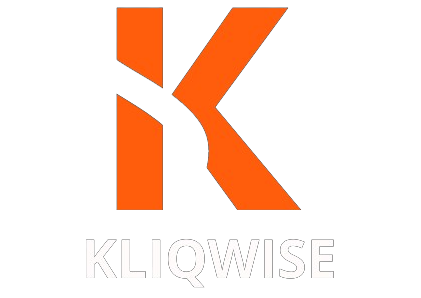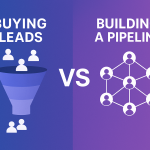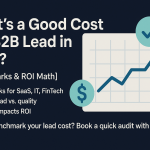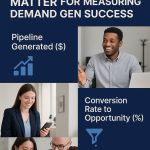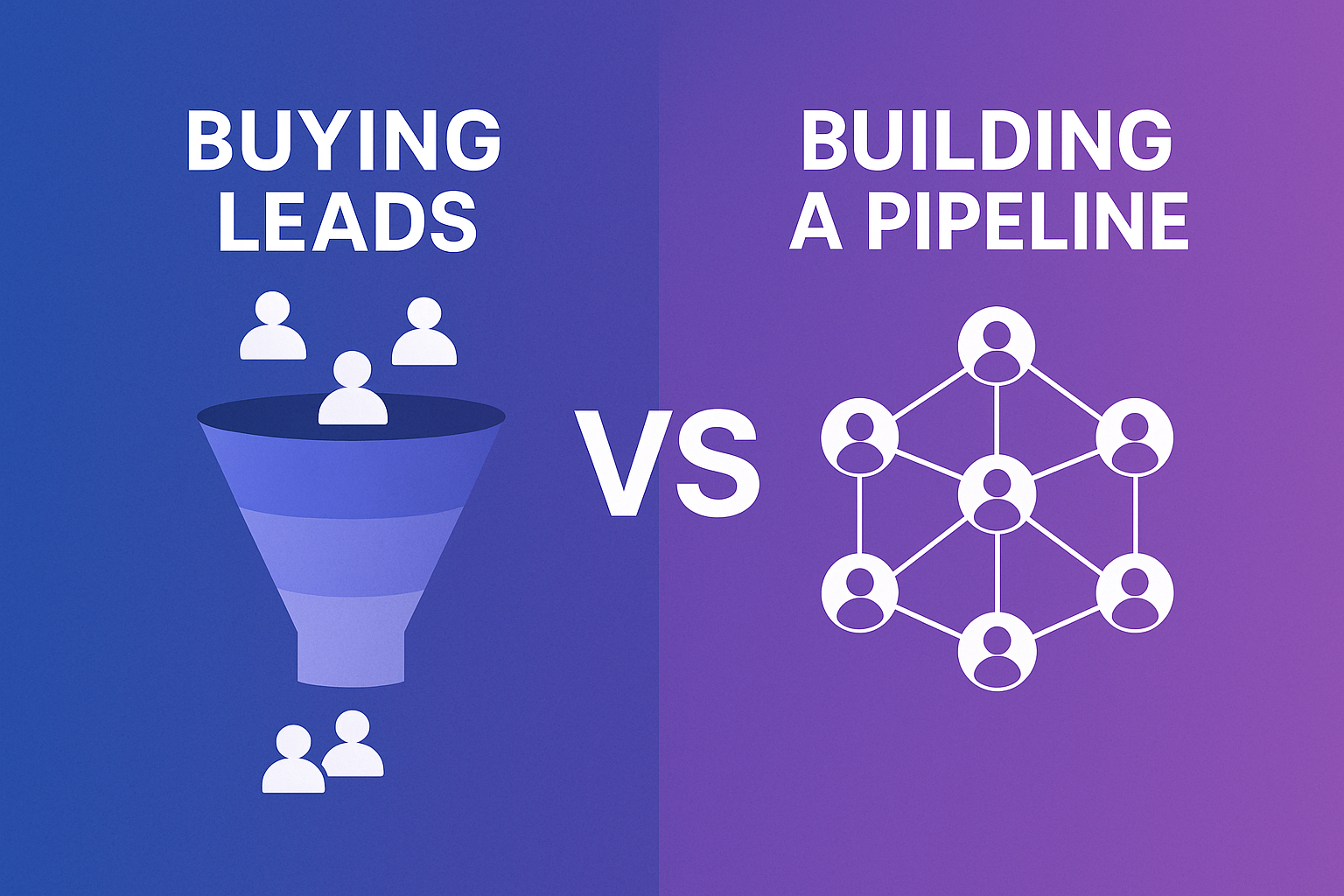Every B2B tech company wants leads.
But not every company knows the difference between buying them and building them.
One delivers a list.
The other delivers revenue.
In 2025’s crowded tech market, this distinction defines who scales — and who stalls.
Buying Leads/database: Fast Results, Fading Returns
Buying leads is like renting attention.
You get names, numbers, and emails — often “qualified” on paper — but here’s the catch:
you don’t control how those leads were sourced, verified, or nurtured.
🚫 The Challenges:
-
No relationship context: The lead doesn’t know you, your brand, or your value proposition.
-
Low intent: You’re reaching out cold — usually to people who’ve never expressed interest.
-
Compliance risks: Purchased lists can violate GDPR or CAN-SPAM if not properly validated.
-
Short-term spikes: You’ll see quick responses, but low conversion and retention.
Buying leads is a sprint — good for filling gaps, not for building growth.
Building a Pipeline: Slow Start, Strong ROI
Building your own pipeline means investing in awareness, engagement, and intent tracking.
It’s a longer game — but one where every interaction compounds value.
✅ The Advantages:
-
Quality over quantity: Every lead passes through your filters, personas, and ICP.
-
Better alignment: Marketing and sales share visibility into where the lead came from.
-
Higher ROI: Owned relationships lead to repeat deals, referrals, and lower CAC.
-
Scalable foundation: You’re not buying contacts — you’re building predictable revenue flow.
Building a pipeline is a marathon — but it’s the one that wins the market.
So, Which Works Better for B2B Tech?
The answer: Both — when used strategically.
In tech, timing and relevance matter as much as targeting.
You can’t build a brand overnight, but you can’t wait forever to hit quota either.
That’s why the smartest GTM teams use a hybrid outbound model.
The Hybrid Outbound Model — Where ROI Meets Speed
A hybrid approach combines the speed of paid lists with the depth of nurtured relationships.
Here’s how it looks in practice:
-
Start with purchased or intent-based data.
Use sources like ZoomInfo or Bombora to identify companies already showing buying signals. -
Enrich and validate.
Use tools like Phantombuster to verify data accuracy, update contact info, and score intent. -
Nurture through multi-touch outreach.
Mix email, LinkedIn, and telemarketing for trust-based engagement. -
Feed results into your CRM.
Keep sales and marketing synced with lead scoring, response tracking, and feedback loops.
This way, you get the best of both worlds: quick volume + high-quality engagement.
Short-Term vs Long-Term ROI
| Approach | Time to Impact | Conversion Quality | ROI Horizon | Best For |
|---|---|---|---|---|
| Buying Leads/data | Immediate (1–2 weeks) | Low to Moderate | Short-term | Fast campaigns or pilot tests |
| Building a Pipeline | 2–6 months | High | Long-term | Consistent revenue growth |
| Hybrid Outbound | 1–3 months | High | Mid to long-term | Scalable and sustainable growth |
Final Takeaway: Don’t Just Buy Leads — Build Conversations
If you’re only buying lists, you’re feeding your sales team data, not demand.
A healthy pipeline isn’t made of names — it’s made of relationships, timing, and relevance.
When you stop measuring success by how many people you contact — and start measuring by how many talk back — that’s when real growth begins.
Talk to us if you’re done buying names and want conversations instead.
We’ll help you build a hybrid outbound engine that turns cold data into warm, ready-to-convert prospects.
